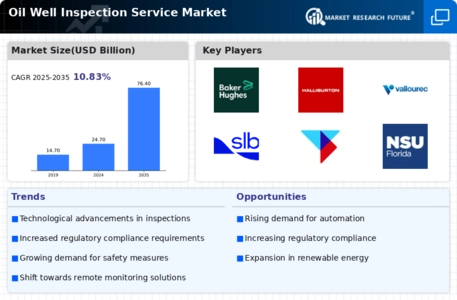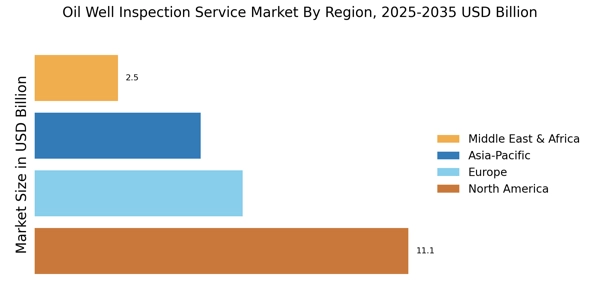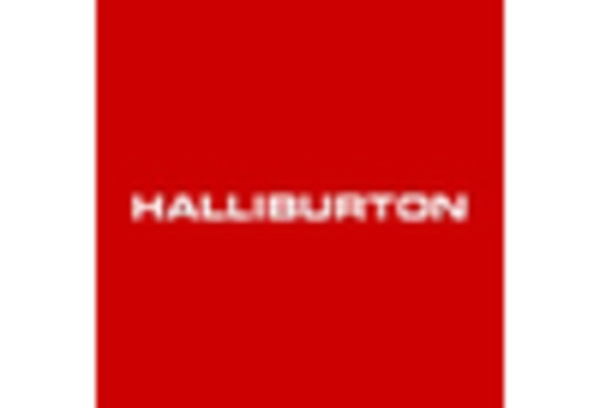Regulatory Pressures
The Oil Well Inspection Service Market is significantly influenced by stringent regulatory frameworks aimed at ensuring safety and environmental protection. Governments worldwide are implementing more rigorous regulations concerning oil extraction and production processes. Compliance with these regulations necessitates regular inspections, thereby driving demand for inspection services. In 2025, it is anticipated that regulatory bodies will continue to enforce stricter guidelines, compelling oil companies to invest in comprehensive inspection services to avoid penalties and ensure operational compliance. This trend is likely to bolster the growth of the Oil Well Inspection Service Market.
Technological Innovations
Technological advancements play a pivotal role in shaping the Oil Well Inspection Service Market. The integration of cutting-edge technologies such as drones, robotics, and artificial intelligence is revolutionizing inspection processes. These innovations enable more accurate assessments of well integrity and environmental impact, thereby enhancing operational efficiency. For instance, the use of drones for aerial inspections can reduce the time and cost associated with traditional methods. As these technologies become more prevalent, the Oil Well Inspection Service Market is expected to expand, driven by the need for more efficient and reliable inspection solutions.
Increased Demand for Energy
The Oil Well Inspection Service Market is experiencing heightened demand due to the growing global energy needs. As economies expand, the requirement for oil and gas escalates, necessitating regular inspections to ensure operational efficiency and safety. In 2025, the International Energy Agency projects that global oil demand could reach approximately 104 million barrels per day. This surge in demand compels oil companies to prioritize inspection services to mitigate risks associated with production and environmental compliance. Consequently, the Oil Well Inspection Service Market is likely to witness substantial growth as companies invest in advanced inspection technologies to enhance productivity and reduce downtime.
Rising Investment in Oil Exploration
The Oil Well Inspection Service Market is benefiting from a resurgence in investment in oil exploration activities. As oil prices stabilize, companies are increasingly willing to invest in new exploration projects, which necessitate comprehensive inspection services to ensure safety and compliance. In 2025, it is projected that exploration budgets will increase, leading to a higher demand for inspection services to assess the viability and safety of new wells. This trend indicates a robust growth trajectory for the Oil Well Inspection Service Market, as companies seek to mitigate risks associated with exploration and production.
Focus on Environmental Sustainability
The increasing emphasis on environmental sustainability is reshaping the Oil Well Inspection Service Market. Companies are under pressure to adopt practices that minimize environmental impact, leading to a greater reliance on inspection services to monitor compliance with environmental standards. The demand for eco-friendly practices is prompting oil companies to invest in advanced inspection technologies that can detect leaks and other environmental hazards more effectively. As sustainability becomes a core business strategy, the Oil Well Inspection Service Market is poised for growth, driven by the need for responsible resource management and environmental stewardship.


















Leave a Comment